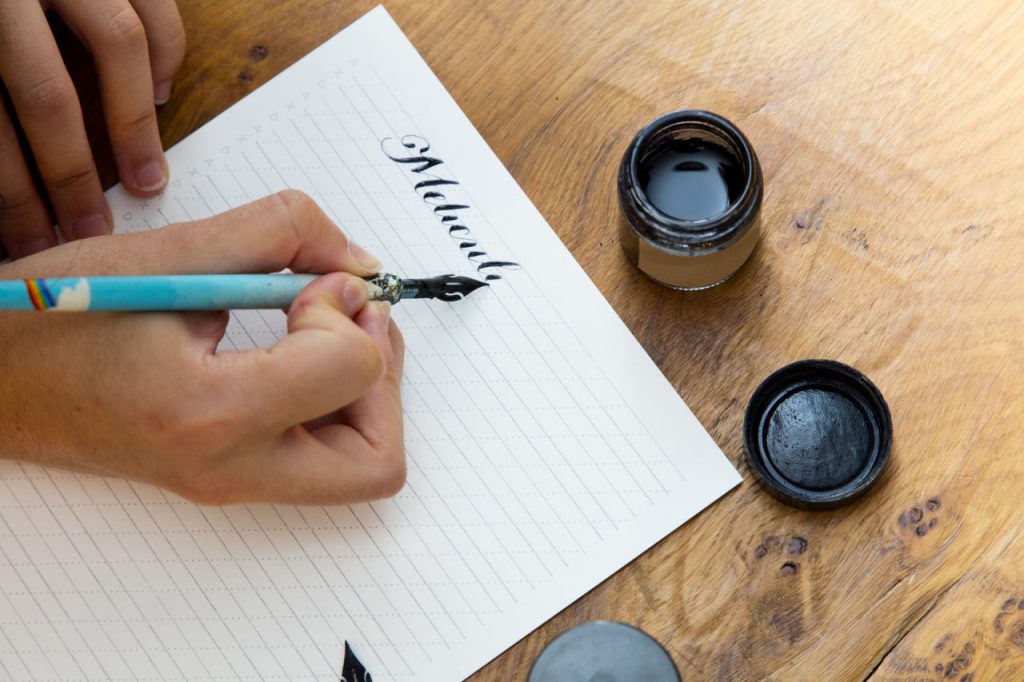Calligraphy is more than just beautiful handwriting—it is an art form that has evolved over centuries, shaping the way we communicate and express creativity. From ancient civilizations to modern digital designs, calligraphy remains a skill that captivates artists, designers, and enthusiasts alike. Whether you are a beginner or an experienced calligrapher, understanding the history, techniques, and tools of this craft can help you refine your skills and develop your unique artistic style.
A Brief History of Calligraphy
Calligraphy has a rich history that dates back thousands of years. In ancient China, calligraphy was considered one of the highest art forms, practiced by scholars and philosophers as a means of self-expression. The use of brush and ink allowed for a fluid, dynamic style that is still admired today.
In the Islamic world, calligraphy became a fundamental part of religious and artistic expression. Since Islam discouraged the use of human imagery in sacred art, calligraphers developed intricate Arabic script styles that adorned mosques, manuscripts, and decorative pieces.
In medieval Europe, monks and scribes used calligraphy to handwrite books before the invention of the printing press. Gothic script, one of the most recognizable European calligraphy styles, was characterized by its bold, structured letters. Over time, more elegant scripts like Italic and Copperplate emerged, influencing the way formal documents and personal letters were written.
Today, calligraphy is experiencing a revival, not only as a traditional craft but also as a modern art form. Many designers incorporate calligraphy into branding, wedding invitations, and digital typography, proving that this ancient skill remains relevant in the digital age.
Essential Calligraphy Tools and Techniques
To start learning calligraphy, you need the right tools and a good understanding of basic techniques.
1. Choosing the Right Tools
- Pens & Nibs: Traditional dip pens with interchangeable nibs offer precision, while brush pens are great for modern calligraphy styles.
- Ink: Black ink is a beginner’s best choice, but experimenting with colored inks can add personality to your work.
- Paper: Smooth, high-quality paper prevents ink from bleeding and helps maintain clean strokes.
- Guidelines & Practice Sheets: Using lined paper helps ensure consistency in letter height and spacing.
2. Mastering Basic Strokes
Before forming full letters and words, beginners should practice fundamental strokes:
- Thin upstrokes: Light pressure creates delicate lines.
- Thick downstrokes: Applying more pressure results in bold, dramatic strokes.
- Curves and loops: Practicing rounded shapes improves flow and consistency.
3. Developing a Personal Style
Once you have mastered the basics, you can explore different calligraphy styles such as:
- Copperplate: An elegant, flowing script often used in wedding invitations.
- Gothic: A dramatic, structured script that creates a bold visual impact.
- Modern Calligraphy: A more relaxed, freeform style that allows for creativity and personal expression.
The Benefits of Learning Calligraphy
Beyond its artistic appeal, calligraphy has several cognitive and emotional benefits:
- Mindfulness and Relaxation: The slow, deliberate movements required in calligraphy can be meditative, reducing stress and promoting focus.
- Improved Handwriting: Practicing calligraphy can enhance everyday handwriting, making it neater and more legible.
- Creative Expression: Calligraphy allows for endless artistic exploration, from crafting personalized gifts to designing home décor.
Conclusion
Calligraphy is a timeless art that bridges history and modern creativity. Whether you are drawn to its elegant aesthetics or its meditative qualities, mastering calligraphy can be a rewarding and fulfilling journey. With patience, practice, and the right tools, anyone can develop beautiful, handcrafted lettering and bring their artistic visions to life.
